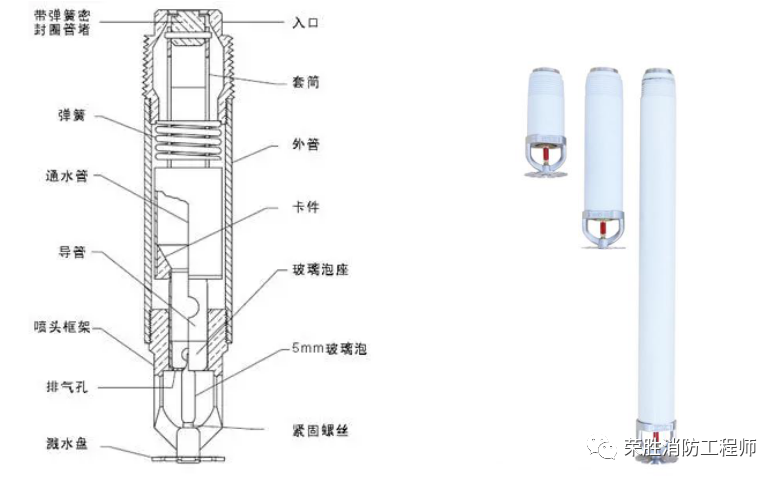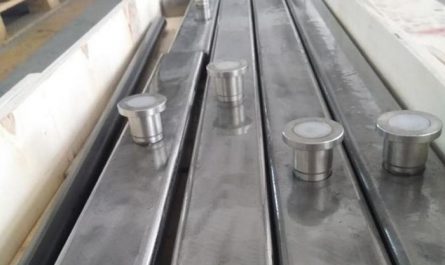This article discusses the principle and construction of special components in automatic sprinkler systems! 1.

Due to the fact that the ambient temperature used in dry systems is generally less than 4 ℃ or higher than 70 ℃, if the system uses a regular droop nozzle, a portion of water will remain at the short pipe of the unexposed nozzle, making it difficult to discharge the system smoothly.

The presence of this part of water poses a risk of freezing.

At this point, it is possible to consider using a regular upright nozzle or a dry drooping nozzle.
If it is a suspended ceiling area, a dry drooping nozzle needs to be used.
Normally, a dry drooping nozzle is composed of a sealed short pipe (with a length of your choice) and a nozzle.
The inlet of the short pipe is sealed by a pipe plug with a sealing gasket, and the glass bubble seals the inlet through the transmission pipe and pipe plug to prevent water from entering.
When a fire occurs, the closed nozzle detects the fire, the glass bubble bursts when heated, and the compression spring inside the short pipe pushes the transmission pipe to open the pipe plug.
Water flows into the short pipe and is extinguished by spraying water through the nozzle.
This structure can prevent water from entering the unexploded nozzle and solve the problem of water storage in the sagging nozzle.
2.
Automatic exhaust valve: Because there is usually a certain amount of air dissolved in water, and the solubility of the air decreases with the increase of temperature, the gas in the water gradually separates from the water and gathers together to form large bubbles or even gas columns.
At this time, in order to ensure that the pipeline is always filled with water, it is necessary to continuously exhaust the gas that has evolved from the pipeline, and automatic exhaust valve is used.
Automatic exhaust valves are generally used in wet systems.
When gas overflows from the system, it will climb up the pipeline and eventually gather at the highest point of the system.
Automatic exhaust valves are generally installed at the highest point of the system.
When gas enters the valve chamber of the automatic exhaust valve and gathers at the upper part of the exhaust valve, the pressure increases as the gas inside the valve increases.
When the gas pressure is greater than the system pressure, the gas will cause the water surface in the chamber to drop, and the float will drop with the water level, opening the exhaust port; After the gas is exhausted, the water level rises and the float also rises, closing the exhaust port.
Similarly, when negative pressure is generated in the system, the water level in the valve chamber drops and the exhaust port opens.
Due to the fact that the external atmospheric pressure is greater than the system pressure at this time, the atmosphere will enter the system through the exhaust port to prevent the harm of negative pressure.
There is still one month left until the fire safety exam.
Is there any help left?? Fire “Prediction AB Volume”! One week before the exam, make deep predictions and accurately score! Pre exam leaks, don’t panic during the exam! Technical Practice, Comprehensive Ability, Case Analysis, and Three Subject Prediction AB Paper are accompanied by video explanations from renowned teachers, directly targeting the core exam points of the exam
.




